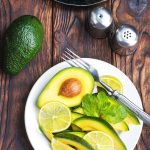Brake fluid is an important part of a motorcycle‘s brake system. Inadequate or contaminated fluid can lead to brake failure, a situation none of us would want to experience. On a bike like the Honda NC750X, this task is not complicated and it is something you can do on your own, saving you both time and money. The task involves checking and refilling your bike’s brake fluid reservoir, located at the front and rear of your bike. This step-by-step guide will help you through the process, ensuring your motorcycle is ready for hitting those open miles.
Understanding the Importance of Brake Fluid
Before diving into the process, it’s essential to understand why brake fluid is important. Brake fluid plays a crucial role in your motorcycle’s brake system. When you press the brake pedal, the brake fluid transfers this force into pressure that is then applied to the front and rear brakes.
Also read : What are the specifics for adjusting valve timing on a Yamaha YZF-R1?
Over time, brake fluid can absorb moisture from the air, leading to a decrease in its boiling point. This can cause your brakes to become less effective, which is why regular checks are necessary.
Locating the Brake Fluid Reservoir
The first step in checking and refilling your brake fluid is to locate the brake fluid reservoir on your Honda NC750X. Most motorcycles, including the NC750X, have separate reservoirs for the front and rear brakes. Usually, the front brake fluid reservoir is joined to the handlebars, while the rear one is typically found near the rear brake pedal.
Additional reading : What is the process to replace the alternator belt on a BMW R1200RT?
Upon locating the reservoirs, you’ll notice two lines indicating the maximum and minimum fluid levels. An adequate brake fluid level should be kept between these two markers.
Checking the Brake Fluid Level
Now that you’ve located the reservoirs, the next step is to check the brake fluid levels. To do this, you would have to open the reservoirs. But before you do, ensure the surrounding location is clean to prevent dirt or dust from getting in. Also, make sure your motorcycle is on a level surface and the handlebars are straight.
If the brake fluid level is below the minimum line or the fluid appears dark and contaminated, it’s time to top it up or replace it. This task is not complicated and can be done with the help of a few tools and a new brake fluid canister.
Refilling the Brake Fluid
Before topping up the brake fluid, it’s essential to check the type of brake fluid your motorcycle uses. There are numerous types of brake fluid available, but for most motorcycles, including the Honda NC750X, DOT 4 brake fluid is recommended.
To refill, start by removing the cap of the brake fluid reservoir. Using a clean syringe or a small funnel, carefully pour the new brake fluid into the reservoir until it reaches the maximum line. Be sure not to overfill. Replace the cap securely, and wipe away any spilled fluid, as it can corrode paint and plastic.
After refilling, pump the brake pedal a few times to remove any air bubbles trapped in the system. Repeat the process for the rear brake fluid reservoir.
Maintaining Your Brake Fluid
Regularly checking and refilling your brake fluid is a good practice, but maintaining the quality of your brake fluid is just as important. Over time, brake fluid can absorb water from the air, leading to a lower boiling point and decreased performance. Therefore, it’s recommended to completely replace your brake fluid every two years, or every 20,000 miles.
Proper maintenance also involves checking the condition of your brake lines and hoses, as they can deteriorate over time. It would help if you also kept an eye on your brake pads and discs, and replace them if they show signs of wear.
In sum, the brake fluid is a key component of your Honda NC750X’s braking system. Regularly checking and refilling your brake fluid can help ensure that your brakes operate effectively, providing you with the peace of mind you need to tackle those open roads.
Practical Tips and Safety Measures
When dealing with brake fluid and the brake system of your Honda NC750X, there are some practical tips and safety measures to keep in mind. Working on your bike’s brake system needs attention to detail and a focus on safety.
First, always use the right type of brake fluid. As mentioned earlier, DOT 4 brake fluid is recommended for most motorcycles, including the NC750X. Using the wrong type can potentially damage the brake system.
Next, never reuse old brake fluid. This fluid is hygroscopic, which means it absorbs water from the air. Even if it looks clean, it could contain moisture, which will lower its boiling temperature and affect braking efficiency.
Another critical point is to avoid getting brake fluid on your bike’s paint or plastic parts, as it’s corrosive. If you accidentally spill some, wipe it off immediately, and rinse the area with water.
Remember, the brake fluid reservoir cap must be replaced securely after refilling to prevent moisture absorption from the air.
Finally, always keep an eye on the condition of other brake system components. Regularly check the master cylinder, brake lines, front and rear brake pads, and calipers. Look for any signs of wear and tear, leaks, or other issues.
Conclusion
Keeping your Honda NC750X’s brake system in top-notch condition is essential for your safety. Regular checks and maintenance of the brake fluid, master cylinder, brake lines, and other components will help to ensure your bike’s brake system functions effectively.
Remember, the brake fluid level should be between the minimum and maximum lines in the reservoir. If it’s below the minimum or looks contaminated, refill or replace it. Use only the recommended type of brake fluid, and avoid overfilling.
Apart from the brake system, don’t forget to maintain other components of your motorcycle. Check tire pressure, turn signals, front and rear pedals, and other parts regularly.
Following these tips and advice will not only extend the lifespan of your Honda NC750X but also enhance your riding experience and safety. The open roads are waiting for you, and with a well-maintained motorbike, you can enjoy them with peace of mind.






